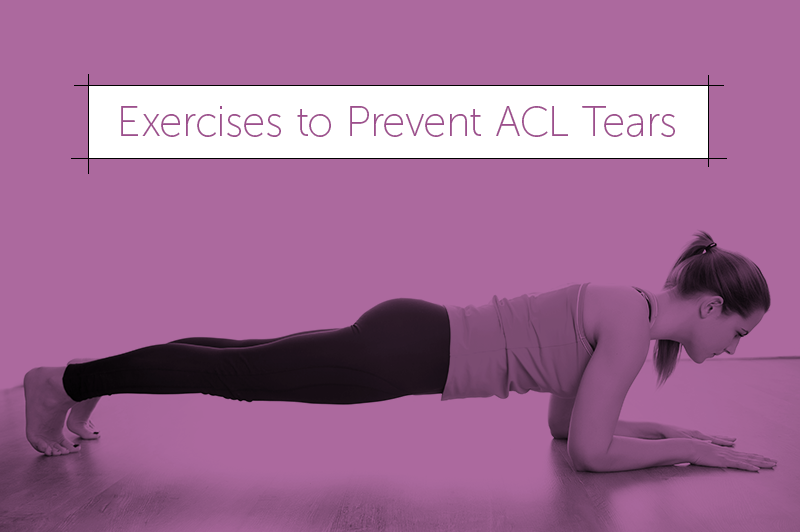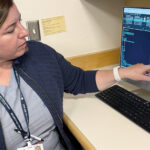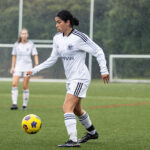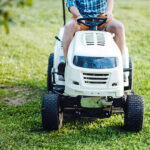How to prevent ACL injuries in female athletes

An ACL (anterior cruciate ligament) tear is a devastating injury that can end an athlete’s season and sometimes take up to a year to fully recover. Along with the pain and long rehab process, it also carries the consequences of a high rate of re-tear and increased risk for osteoarthritis. But what if you could decrease your risk of getting this injury, just by doing certain exercises for 20 minutes two times per week?
Dr. Dai Sugimoto, director of clinical research at The Micheli Center for Sports Injury Prevention at Boston Children’s Hospital, has focused his research on training regimens that help prevent ACL injuries. Through extensive study, Sugimoto has found specific exercises that have been shown to decrease the rate of ACL injuries for female athletes.
The benefits of neuromuscular training
One of the training regimens specific to ACL injury prevention is neuromuscular training (NMT). “NMT has proven to be significantly effective in helping prevent ACL injuries in female soccer and handball players, and shows promise for being effective for basketball players as well,” says Dr. Sugimoto.
But what is neuromuscular training? NMT can be classified into four distinct areas: balance, plyometrics, strengthening and proximal control training. These different exercise groups work together to help an athlete improve their ability to jump, pivot and cut without putting their body at risk of injury. Exercises such as single leg squats, Russian/Nordic hamstring curls and planks — among many others — help enhance biomechanical and neuromuscular control during the quick, explosive movements that often result in ACL injuries.
Through analysis of a wide array of research, Dr. Sugimoto found that athletes who increase their strength and proximal control (hamstrings, hip and trunk control) are able to reduce their risk of ACL injury. Other studies have also shown the benefits of plyometric exercises in helping reduce stress on the knee when an athlete is landing after jumping. Put together, Dr. Sugimoto theorized that developing strength to reduce the force of landing and increasing proximal control helps decrease the risk of ACL injury in some female athletes.
Why only female athletes?
The occurrence of ACL injuries in young female athletes is two to four times higher in jumping, cutting and pivoting sports compared to males. This is due to a number of factors, including differences in flexibility and strength between genders. “Males get a lot more muscular strength while they are going through puberty,” explains Dr. Sugimoto. “Females do not gain as much strength in their lower extremities, especially their hips.” Because of this, female athletes can often be at an increased risk for ACL injuries.
Since the 1990s, 19 large-scale clinical trials have been published to test the efficacy of NMT on reducing ACL injuries in female athletes. In a review of these studies, Sugimoto found that female athletes 14-18 years old and 19-20 years old showed a reduced risk of sustaining ACL injuries by 72 percent and 52 percent respectively.
Studies have yet to show the efficacy of NMT in male athletes, but Sugimoto and his colleagues in the ACL Program at Boston Children’s are continuing to assess how young male athletes can also reduce their risk of ACL injury. However, ACL injury prevention protocols are still used with both male and female clients at The Micheli Center, and are beneficial for athletes who have previously torn their ACL and are looking to prevent a re-tear. These protocols extend beyond just NMT, and also involve training programs that assist with preventing other common sports injuries.
How do I reduce my athlete’s risk of ACL injury?
Sugimoto’s findings have shown that complying and adhering to NMT is crucial for the success of decreasing ACL injury risk for some female athletes. Higher compliance rates are associated with decreased incidence of ACL injuries. Furthermore, the duration and frequency of NMT sessions were directly associated with ACL injury reduction. In other words, the more time athletes spend performing NMT — and doing so correctly — the lower their risk of sustaining an ACL injury. However, Dr. Sugimoto determined that doing these exercises just two times per week for 20 minute sessions was enough to decrease risk of injury.
Verbal feedback and video instruction were shown to increase the benefits of neuromuscular training, so it is highly recommended that athletes are provided with proper feedback while performing NMT. This could be from an athletic trainer or coach who is educated on the proper way to perform these exercises.
Training should also be catered to the needs of each athlete, as neuromuscular training is not simply a one-size-fits-all program. At The Micheli Center, injury prevention specialists work with individual athletes to find the right program that fits what is best for them. “Each athlete is different, so we cater the exercise program to the individual’s needs,” says Dr. Sugimoto.
Unfortunately, ACL injuries are still increasing in frequency — particularly in youth athletics. But increased research efforts and the growth of ACL injury prevention are making a strong push to keep young athletes healthy and enjoying the sports and activities they love.
Learn more about the ACL Program at Boston Children’s Hospital.
Related Posts :
-

Ask a sports medicine specialist: Why are ACL tears so common among female athletes?
When an athlete is sprinting after an opponent who suddenly stops or changes direction, their anterior cruciate ligaments (ACLs) make ...
-

Forging a path back to school after orthopedic trauma
Orthopedic trauma can force children to miss school, sometimes for an extended period. But even when patients have regained enough ...
-

Jackie’s dreams of playing professional soccer back on track after ACL surgery
From her dorm in Newcastle, England, Jackie Zapata can hear fans roaring in the soccer stadium a few blocks away. ...
-

What orthopedic trauma surgeons wish more parents knew about lawnmower injuries
Summer is full of delights: lemonade, ice cream, and fresh-cut grass to name a few. Unfortunately, the warmer months can ...





